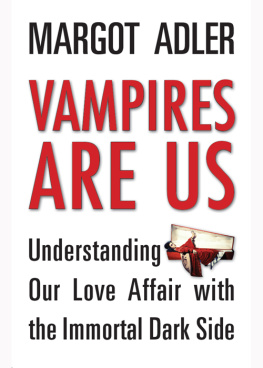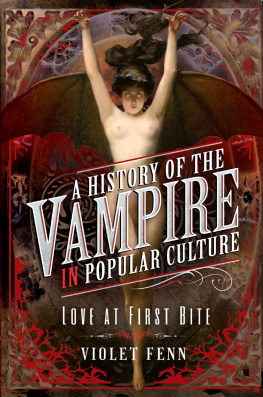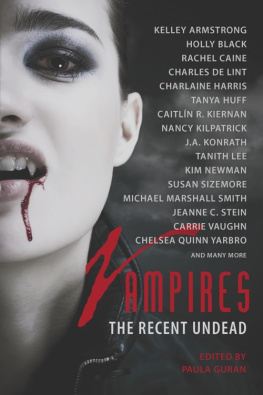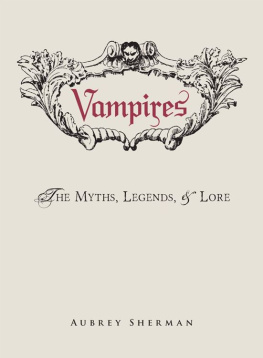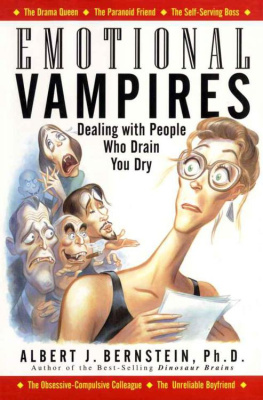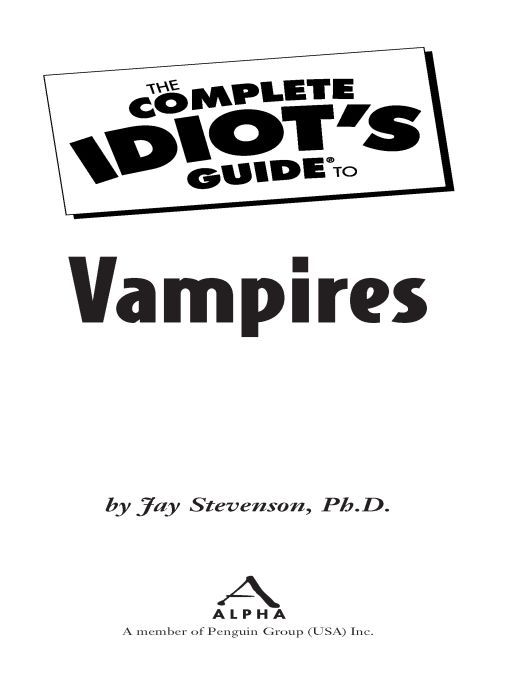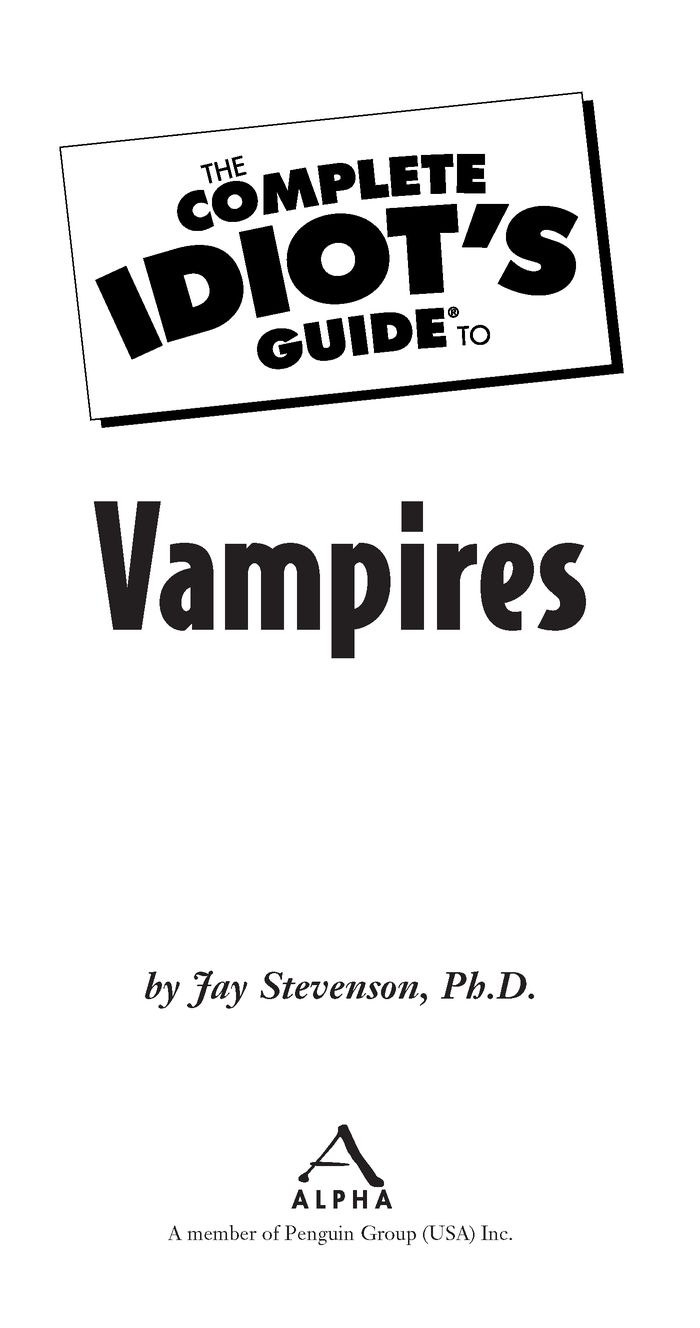Table of Contents
Introduction
Vampires beckon us out of our merely human existence. On a conceptual level, they break down the barriers between human and nonhuman and between living and dead, so that these basic distinctions lose their meaning. On an emotional level, they break down the distinctions between fear and desire. They terrify us and we love them for it!
At the same time, vampires symbolize some of the deepest and most delicate feelings that arise in response to our human connections with one another. They represent and embody the painful, parasitic impulses that sometimes take control of human relationshipsrelationships between lovers or among family members, among friends or enemies, and between rulers and their subordinates. And they hold out the promiseand the threatof transformation. They could change us forever.
Their elusively symbolic power has made them hugely popular figures in legend and literature, pop culture and subculture. They appear in different contexts, changing in response to our shifting emotional and spiritual dilemmas. Killed, they come back; stripped of power, they learn new rules. Thus their history is closely linked to ours.
Vampires remain among the most persistently compelling of all legendary creatures. Despite their age, they are distinctly modern, every bit as much at home in a newly opened nightclub as a medieval castle. In fact only recently they have become more prevalent and significant than they have ever been.
The Complete Idiots Guide to Vampires looks at these creatures, their nature, their history, and their impact, in the many different settings they have appeared, from ancient myth to modern media, as well as in their many guisesterrifying, seductive, deep and dark, glitzy and glamorous, weird and silly.
This book is divided into four sections:
Part 1, Points of Entry, talks about the many ways leading into the world of vampires, including history, literature, the occult, and pop culture.
Part 2, Gory Lore, discusses vampire legends from ancient times to today, including the superstitions and vampire scares of Eastern Europe and vampirelike myths from around the world.
Part 3, Out of the Coffin, relates vampires to the lives of the growing numbers of human beings today who identify with them, from role players and lifestylers to blood fetishists and clinical cases.
Part 4, Classic Vampires We Love to Hate, surveys the voluminous subject of vampires in literature from the Romantic period to today, including the work of John Polidori, Bram Stoker, and Anne Rice. We also take a look at early vampire films.
And to whet your appetite as you read, youll unearth boxes filled with interesting dirt pertaining to the subject at hand:
Grave Mistake
Here youll find faux pas, foolishness, and fallacies that have dogged the trails of those seeking to understand vampires.
Dead Giveaway
This feature supplies extra background information on subjects described in the textthe native soil, so to speak, of the vampire issues youre reading about.
Cold Fact
This box contains dark data of the strange-but-true variety to satisfy all the vampire trivia addicts.
Stalk Talk
Here, for the tongue-tied, youll find definitions of vampire-related terms used in the book.
Acknowledgments
Thanks again and always to the Central N.J. Scooby gang: TK, Cora, Matthew, Vic, and Stephanie, for books, articles, videos, websites, ideas, and feedback. Special thanks to Debra Roy for videos.
Trademarks
All terms mentioned in this book that are known to be or are suspected of being trademarks or service marks have been appropriately capitalized. Alpha Books and Penguin Group (USA) Inc. cannot attest to the accuracy of this information. Use of a term in this book should not be regarded as affecting the validity of any trademark or service mark.
Part 1
Points of Entry
Vampires are a bigger subject than most people realize, not only because their popularity has been surging recently like fresh blood from a jugular vein, but also because their history is so rich, multifaceted, strange, and ancient. Much more than a pale sucker behind an opera cape in a horror movie, the vampire is one of humankinds most fascinating terrors. So we owe it to ourselves to stick our necks out and find out what the excitement is all about.
There are many ways in to the world of vampires, as the chapters in this section show. Through history and legend, folklore and literature, pop culture, nightlife, and the occult, vampires yield a rich supply of food for hungry imaginations. And just so you dont make a mess when you feed, the subject is divided into sections like a TV dinner!
Theres an overview, a look at undeath, a categorical breakdown of different vampire kinds, a chapter on relating to vampires from personal experience, and a look at the campy side of vampires. These chapters represent a range of approaches to the subject: historical, philosophical, occult, psychological, and silly! All of them should prepare you for the challenges that lie ahead in the rest of the book.
Chapter 1
Spadework
In This Chapter
Vampires in legend
Literary vampires
Vampires in movies and TV
Vampires and reality
If you watch TV, go to the movies, read books, or give out Halloween candy, you probably have a pretty good idea of what vampires are supposed to be like: scary, fanged, humanlike creatures who return from the grave to suck the blood of their victims. This concept of vampires has been around for centuries, yet like so many old notions, vampires continue to have a powerful hold on people today. Their mysterious appeal will not die, but keeps coming back in new forms.
The endurance of the vampire myth is clear from all the books, movies, articles, websites, games, and nightclubs devoted to vampires these days. They come in all varieties. There may be a silly cartoon vampire on your breakfast cereal box, but there may be a sinister living vampire behind the disappearance of the child on the milk carton. Sometimes theyre scary, sometimes funny, sometimes plainly make-believe, other times strangely real. And they seem to turn up when you least expect them.
The fact that vampires are so widespread and so various makes them extremely difficult to keep track of. Vampire lore from different times and places has a tendency to bleed together. It flows from many sources and is continually being replenished in different ways by those who fall under the vampiric spell. But despite the challenges posed by continual blending of old and new vampire lore, careful digging around by scholars has yielded recognizable remains of the origins, history, and development of the vampire myth. This chapter provides the bare bones of the story.




